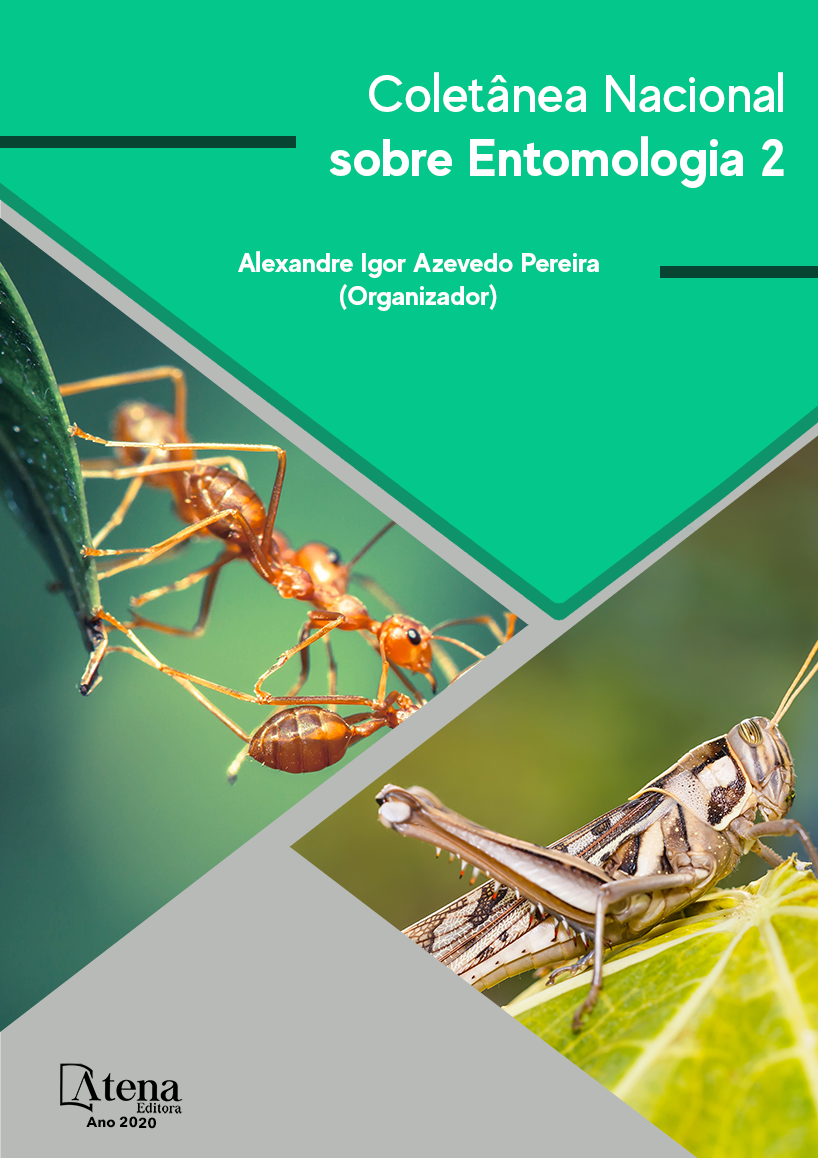
COMUNIDADE DE COLEOPTERA DE SOLO DE FLORESTA DE RESTINGA DA ÁREA DE PROTEÇÃO AMBIENTAL GUANANDY- ESPÍRITO SANTO, BRASIL.
Devido aos poucos estudos sobre
coleópteros em ecossistema de restinga no
estado do Espírito Santo, e como forma de
contribuir para os trabalhos de levantamentos
da fauna do Estado, foi avaliada a comunidade
de Coleoptera de solo da floresta de restinga
da Área de Proteção Ambiental Guanandy. As
coletas foram realizadas no período de dezembro
de 2013 à novembro de 2014, utilizando
armadilha de solo sem atrativo, dispostas em 2
transectos. Também mediante captura manual.
Foram coletados 1543 indivíduos pertencentes
a 24 famílias, as mais abundantes com 94%
dos indivíduos capturados foram Scarabaeidae
com 1197 indivíduos e Nitidulidae com 254.
As famílias mais abundantes também foram
consideradas como as mais diversas em
termos de grupos tróficos, não sendo registrado
apenas o GT algívoro. Os resultados obtidos
sugerem elevada riqueza de famílias, sendo
esta ainda maior na condição de inventário,
onde se utilizam mais armadilhas. Assim, novos
estudos com diferentes metodologias devem
ser realizados para se ampliar o conhecimento
deste grupo taxonômico no ecossistema de
restinga e consequentemente no Estado do
Espírito Santo.
COMUNIDADE DE COLEOPTERA DE SOLO DE FLORESTA DE RESTINGA DA ÁREA DE PROTEÇÃO AMBIENTAL GUANANDY- ESPÍRITO SANTO, BRASIL.
-
Palavras-chave: Pitfall; Guanandy; Biodiversidade
-
Keywords: Pitfall; Guanandy; Biodiversity.
-
Abstract:
Because of the few studies of
beetles in salt marsh ecosystem in the state of Espirito Santo, and in order to contribute
to the work of state faunal surveys, we evaluated the community sandbank forest floor
of Coleoptera of Guanandy Environmental Protection Area. Samples were collected
from December 2013 to November 2014, using pitfall traps unattractive, arranged in
two transects. Also by manual capture. We collected 1543 individuals belonging to 24
families, the most abundant with 94% of the captured individuals were Scarabaeidae
with 1197 individuals and Nitidulidae with 254. The most abundant families were also
considered to be the most diverse in terms of trophic groups and are not only registered
the GT algívoro. The results suggest high wealth families, which is even greater in the
inventory condition, which are used more traps. Thus, further studies with different
methodologies should be conducted to increase the knowledge of this taxonomic group
in the salt marsh ecosystem and consequently on the state of Espirito Santo.
-
Número de páginas: 14
- Aline Macarini Vaz
- Josinéa dos Santos Noé
- Cíntia Cristina Lima Teixeira
- Helimar Rabello
- Otoniel de Aquino Azevedo
- Gilson Silva-Filho


